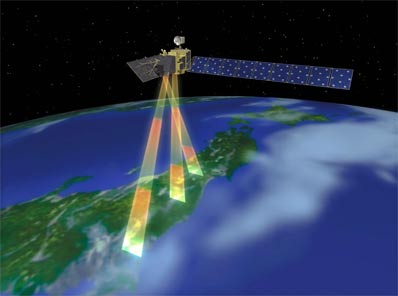Reports of the International Energy Agency, talks about a new OPEC-deal and monthly updates considering the American oil reserves influence the markets for commodities significantly. Many traders speculate in advance or respond to after the information is made available to the public. This results in fluctuating prices with very high trading volumes. So, it doesn’t take a rocket scientist to understand how much profit you can make if you can obtain this information before the market does. But it does take a rocket scientist to accomplish this advantage by using earth-imaging from satellites.
Earth-imaging works by letting satellites fly in orbits around the earth and with the use of high definition camera’s they can constantly take pictures. All these pictures are then combined in one display and made available for analysis by using the cloud (The Economist, 2017). One example of a company that is actively involved in this technology is Urthecast. Visiting the company’s website can give a very clear image of how precise this technology is.
Earth-imaging or geospatial intelligence becomes a more and more a critical data source for people working in agriculture, the energy sector and even in the finance sector (The Economist, 2017; Scoles, 2017). Especially the finance sector seems interested in getting information in a timelier manner. The obtained information is valuable for hedge funds involved in commodity trading, because it is possible to estimate the change in oil reserves by analyzing the shadow of the oil tanks and therefore knowing how full the tanker is with oil (Kearns, 2017).
Besides the commodity markets, geospatial intelligence can also be used to obtain information about how companies are performing. This can be done by analyzing the occupancy rates of car parks outside big retailers (The Economist, 2016). It is not certain if these metrics are valid proxies for the companies’ financial performance, so high volume investments should be made with caution. But the advantage of time is so significant, that the problem of unreliable data can be overcome by additional research.
References
Kearns, J. (2017). Satellite Images Show Economies Growing and Shrinking in Real Time. Bloomberg Business Week, July 9th 2015. [online] Available at: https://www.bloomberg.com/news/features/2015-07-08/satellite-images-show-economies-growing-and-shrinking-in-real-time [Accessed: September 27th 2017].
Scoles, S. (2017). 88 NEW SATELLITES WILL WATCH EARTH, ALL THE TIME, ALL THE PLACES. Wired, February 14th 2017. [online] Available at: https://www.wired.com/2017/02/88-tiny-satellites-will-watch-time-everywhere/ [Accessed: September 27th 2017].
The Economist (2016). The watchers. The Economist, August 18th 2016. [online] Available at: https://www.economist.com/news/business/21705369-alternative-data-firms-are-shedding-new-light-corporate-performance-watchers [Accessed: September 27th 2017].
The Economist (2017). Planet’s satellites offer customers a new world view every day. The Economist, February 16th 2017. [online] Available at: https://www.economist.com/news/business/21717110-analysing-images-space-could-be-big-business-planets-satellites-offer-customers-new-world [Accessed: September 27th 2017].

